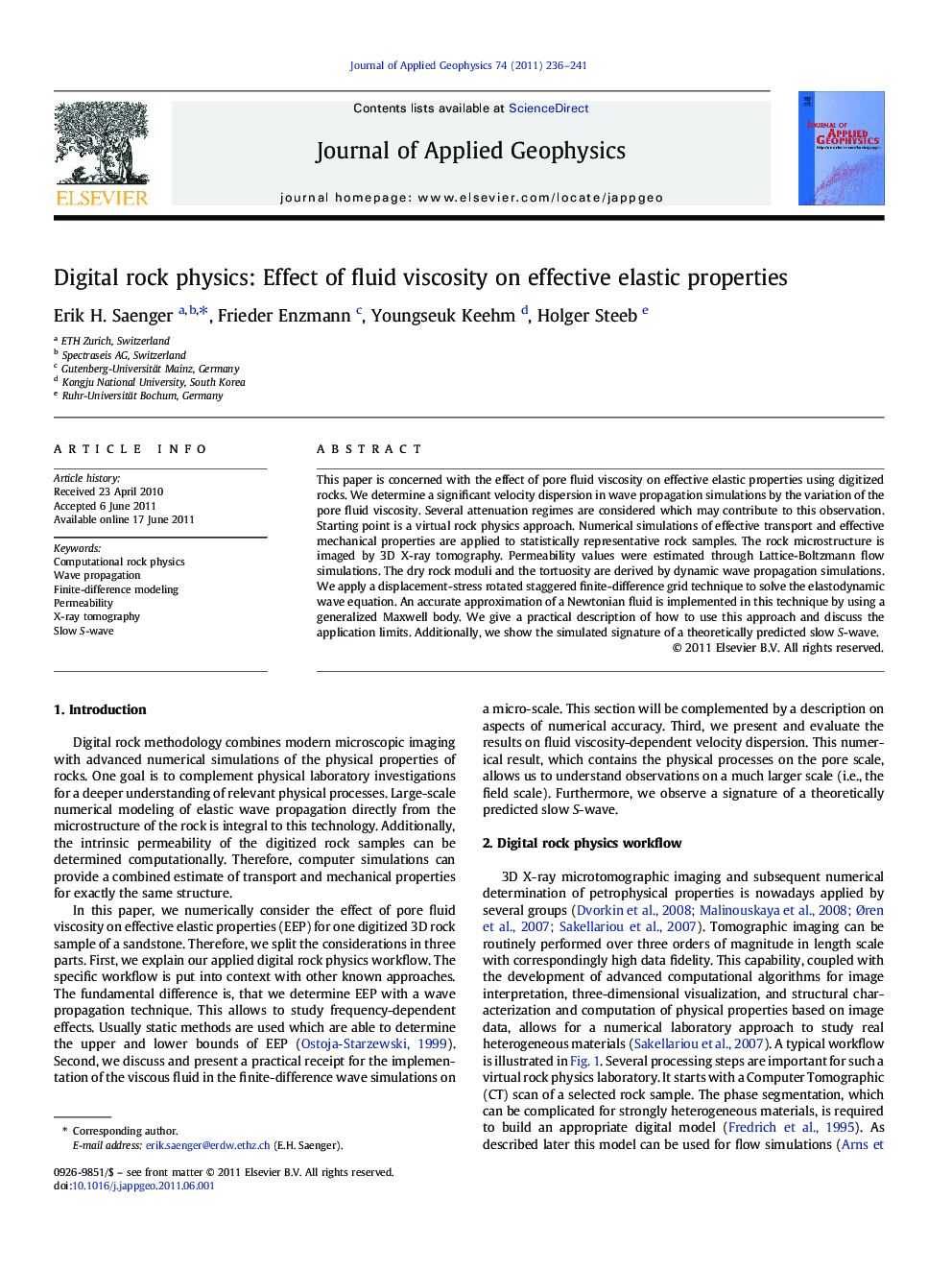| Article ID | Journal | Published Year | Pages | File Type |
|---|---|---|---|---|
| 4740689 | Journal of Applied Geophysics | 2011 | 6 Pages |
This paper is concerned with the effect of pore fluid viscosity on effective elastic properties using digitized rocks. We determine a significant velocity dispersion in wave propagation simulations by the variation of the pore fluid viscosity. Several attenuation regimes are considered which may contribute to this observation. Starting point is a virtual rock physics approach. Numerical simulations of effective transport and effective mechanical properties are applied to statistically representative rock samples. The rock microstructure is imaged by 3D X-ray tomography. Permeability values were estimated through Lattice-Boltzmann flow simulations. The dry rock moduli and the tortuosity are derived by dynamic wave propagation simulations. We apply a displacement-stress rotated staggered finite-difference grid technique to solve the elastodynamic wave equation. An accurate approximation of a Newtonian fluid is implemented in this technique by using a generalized Maxwell body. We give a practical description of how to use this approach and discuss the application limits. Additionally, we show the simulated signature of a theoretically predicted slow S-wave.
► A digital rock physics workflow including dynamic wave propagation simulations is presented. ► A practical receipt to implement a viscous fluid into a finite-difference wave propagation scheme is given. ► The effect of fluid viscosity on effective elastic properties is discussed. ► We observe a signature of a theoretically predicted slow S-wave.
